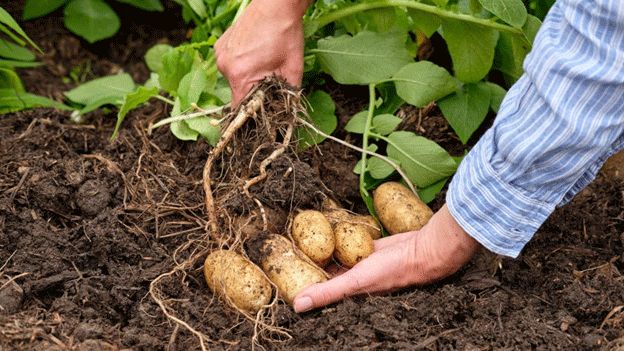Potato farming has always required careful planning, but recent insights from agronomists and experienced gardeners show that companion planting can make a significant difference. Rather than isolating potatoes in separate plots, integrating them with select plants can lead to increased yields, better-tasting tubers, and more efficient use of land.
Olya Voronova, a gardening expert, emphasizes the advantages of growing potatoes alongside specific crops. She suggests that companion planting with aromatic herbs, legumes, and other beneficial plants can be a game-changer for potato quality. “For enhancing taste, aromatic herbs are ideal. Planting potatoes next to beans or peas not only saves space but also improves flavor,” Voronova explained in an interview with the portal Gorodovoy.
Benefits of Companion Planting for Potatoes
- Boosted Nutrient Uptake: Legumes like beans and peas have the unique ability to fix nitrogen from the air and enrich the soil. When grown alongside potatoes, they naturally fertilize the soil, providing essential nutrients that support robust potato growth. This relationship enhances tuber size and quality, leading to higher yields.
- Pest Control: Aromatic herbs such as thyme, rosemary, or marigold can serve as natural repellents against pests like Colorado potato beetles and aphids. By masking the scent of potato plants, these herbs deter unwanted insects and reduce the need for chemical pesticides. This approach promotes a healthier, more organic crop.
- Enhanced Flavor: The influence of neighboring crops on taste is not a new concept. Planting potatoes with herbs like basil, dill, or coriander can subtly enhance the flavor of the harvested tubers. The close proximity allows for a symbiotic relationship where the aromatic oils from the herbs infuse the potatoes, making them richer and more flavorful.
- Space Optimization: Companion planting maximizes land use, which is particularly beneficial for farmers working with limited acreage. By intercropping potatoes with supportive plants, farmers can increase biodiversity on their land while making efficient use of space. This method also helps maintain soil structure and prevents erosion.
The Best Companion Plants for Potatoes
- Beans and Peas: As nitrogen fixers, these legumes nourish the soil, promoting healthier and larger potato plants.
- Aromatic Herbs: Basil, sage, and cilantro improve the soil’s microenvironment and deter harmful insects.
- Marigolds and Nasturtiums: These flowering plants are highly effective at pest deterrence and add a splash of color to the field, which can also attract pollinators.
Practical Considerations
While the benefits are clear, successful companion planting requires thoughtful implementation. Ensure that each plant receives adequate light, water, and nutrients to thrive. Avoid pairing potatoes with crops that can attract similar pests or compete too heavily for resources, such as tomatoes or peppers. Additionally, rotating crops from year to year can prevent soil depletion and reduce the risk of disease.
The age-old practice of companion planting is gaining renewed interest as farmers and agricultural scientists recognize its potential for increasing potato yield and quality. By strategically placing legumes and aromatic herbs near potato crops, not only can farmers enjoy larger and tastier harvests, but they can also contribute to more sustainable farming practices. As competition for fertile land and resources grows, these insights could prove vital for future agricultural success.

